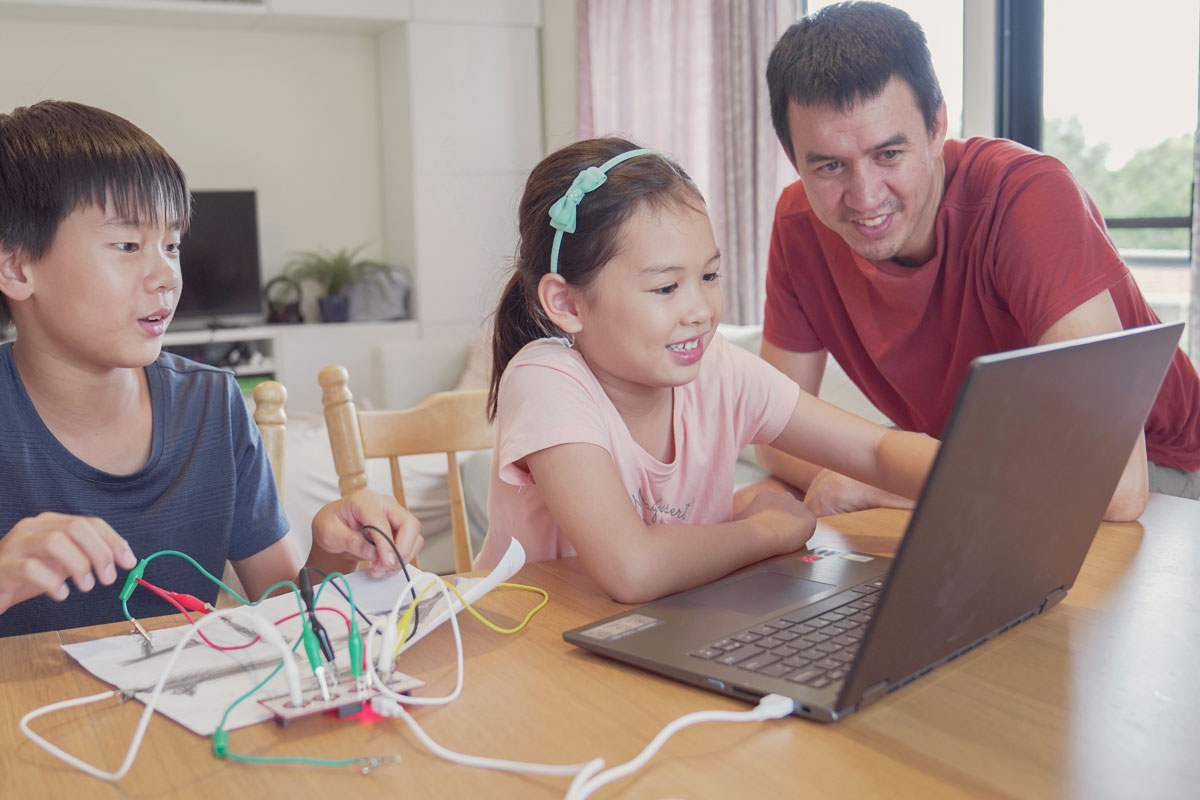
Growing up in a typical working-class family in Manchester, England, I watched as my mother went off to work whilst my father stayed at home. He occasionally picked up the odd job here and there. Seeing my mother come home from work every evening and still needing to cook, clean, and help myself and my brother with our homework pained me and instilled the “traditional” idea that the man goes to work and provides. This ideology stuck with me through the first years of my marriage whilst living in Asia; it stuck with me through my time living in Mexico with my wife and newborn daughter.
However, that changed when my wife was offered a teaching position here in Texas. The position meant I would go from the financial provider to the emotional and education provider for my daughter.
This challenge is one that many more fathers are facing, as a Pew Research study showed that as of 2016, the number of stay at homes fathers made up 17% of the total stay-at-home parents.
This statistic shows that ideas about traditional parenting are changing, and it is something that we as a society need to face head-on and understand.
Feeling Out of Place
Fathers in the home can often feel that they are out of place when it comes to educating their children.
Whilst teaching younger students is a profession dominated mainly by women, that doesn’t mean that a father cannot provide a well-rounded education at home.
The responsibility of modeling and shaping the early years of your child’s education is a minefield of milestones, vocabulary expectations, social development, and your own personal fears of failing your child in terms of the education standards you are providing.
As a teacher of 8 years, I understand how to plan and deliver a lesson, but even I was worried and began to second guess everything I did. The overwhelming challenges faced by stay-at-home fathers overcame my own experience and skills. This feeling of being out of my element can easily send a new stay-at-home father into a spiral of self-doubt, self-criticism, and a feeling of being a failure. This in turn leads to feelings of depression and lower standards of education provided.
However, when thinking about your place in the home, remember that even though you are no longer working and bringing in money at the end of the month, you are doing something just as important.
You are getting to spend time with your child that you would not have originally had. I have had the pleasure of seeing my daughter take on my traits and come to share my interests, my sense of humor, and my love of learning. As fathers, we must remember that a place in your child’s life is always where they need you to be, and when the situation calls for it, then where they need you to be is sat next to them whilst they learn their ABCs and their 123s.
Staying positive and focused on the difference you are making in your child’s life is obviously much easier to be told by an outsider than it is to tell yourself. Still, you must be open to hearing the positive reinforcement from family and friends. This willingness to face your issues and see past them to the greater good will make a big difference.
Although the adaptation from financial provider to educational provider is tough, keep your eyes on the future and remember that your child needs the love and attention you provide more than the money you would have provided.
There Are Not Enough Hours in the Day
Between teaching, cleaning, doing laundry, and cooking, it can sometimes feel like there are not enough hours in the day. If you teach a lesson for 45 minutes per topic and do 5 lessons each day, that is already 3 hours and 45 minutes… and that’s before you take into accountbreak timess, and lunch time.
If you do not split your time wisely you can find yourself feeling overwhelmed easily and finding that tasks go unfinished and this will only spiral and lead to further feelings of stress and failure that we discussed in the previous section.
As a parent, I want to be present whilst my child is learning if they need help but as a teacher I understand that your lessons must be split into two different sections to provide your child with the best opportunity to learn. The first section is referred to as “Direct Instruction” this is the portion of the lesson where you set the lesson goal, introduce the topic, and have teacher guided instruction with minor student input. The second section is referred to as “Individual Practice” and this is where you get the opportunity to get away from the table and get other jobs done around the house. Here is my recommendation for lessons:
First 15 minutes:
Direct Instruction: You need to be with your child introducing and explaining the topic, and this is a great opportunity for your child to ask any questions they have.
Second 15 minutes:
Individual Practice: In this section, your child can be left with either a research activity, a worksheet, a comprehension text, etc.
Last 15 minutes:
Review: This is when you can check your child’s work and ask questions about the topic to check for understanding. You can also use this time for positive reinforcement of your child’s work.
Splitting your lessons and planning your time wisely will help you stay on track of your other responsibilities without taking away any teaching time.
This means that you can still provide the dedicated teaching that you want for your child and still find time to play, clean. cook, and create most importantly to rest. We have to remember that teaching is just one aspect of being astay-at-home parent and that is why it is so important to have a plan and stick to it. Your family still needs to eat, have clean clothes, and a tidy house.
To this extent, you need to plan not only your child’s lessons but your time as well. Timetables are not just for your child they can be your best friend. If you can keep track of what time you need to be preparing lunch, teaching, playing with your child, and cleaning, then you can also reinforce positive activities in the home that allow you to see the number of tasks that you have completed that day.
Educational Responsibilities
There is no way to put this point nicely, so it must be put in the bluntest way possible – you as the sole educational provider are the one who sets your child’s education career into motion.
They will not be home-schooled forever, so what you teach them in the coming years will need to prepare them for higher education in the same way that a traditional school would. They will leave your schooling environment, and they will enter a different system that will expect them to have learned certain skills and topics.
Whilst many people choose to home-school for a variety of different reasons, it is important to keep your curriculum as close to the national standard curriculum so that your child is best prepared for higher education.
These curriculums can be found easily through the Texas Teaching Agency and then implemented in your own way with any additions that you would like to make. Loosely following these curriculums can allow you to engage with standardized testing and therefore create a baseline for your child’s future in non-home-based education.
In terms of testing, you will need to work with an agency that specializes in home-school and testing so that legally you can continue to home-school your child. Agencies such as power homeschool, home-school boss, and home-school testing services provide tests, rubrics, and in some cases course materials for you to use. Although rubrics are provided you will be responsible for the grading and reporting of results.
Without a doubt, the challenges in educating children are great which is why people choose to train for many years to do it as a profession. This does mean that you will face great challenges in your journey to home-school your child but these challenges can be overcome as long as you are willing to research, learn and spend time planning for the future.
The Big Picture
We have always been taught that a man’s place is at work, financially providing for the child, and a mother’s place is to be at home taking care of the child’s emotional needs. However, the modern world has turned these ideas on their heads, and it is becoming more and more common for the father to be the caregiver at home.
This of course presents challenges for a group that has traditionally not filled this vital role and these challenges can take a mental toll. This toll is only further increased when we add in the responsibilities of being the sole person in charge of your child’s education.
Even though these challenges and adaptations you must make seem impossible at times, you must remember that with time and organization you will be able to conquer the challenges of being a stay-at-home father and sole education provider.
From one father who struggled to another. I wish you the best in the future and remember, everything will be ok as long as you are there for your child.
David Bracher
David Bracher is a stay-at-home father of one. Born and raised in Manchester, England, David quickly decided that living in one place was never going to be enough for him, so he set out to travel the world and develop his love of teaching and writing. After living in China, Myanmar, and Mexico, David has settled in Texas with his wife and daughter. If he’s not spending time with his family, you can find him with his nose buried in a book about anything and everything. More of his writing can be found at https://writers.work/davidbracher.
